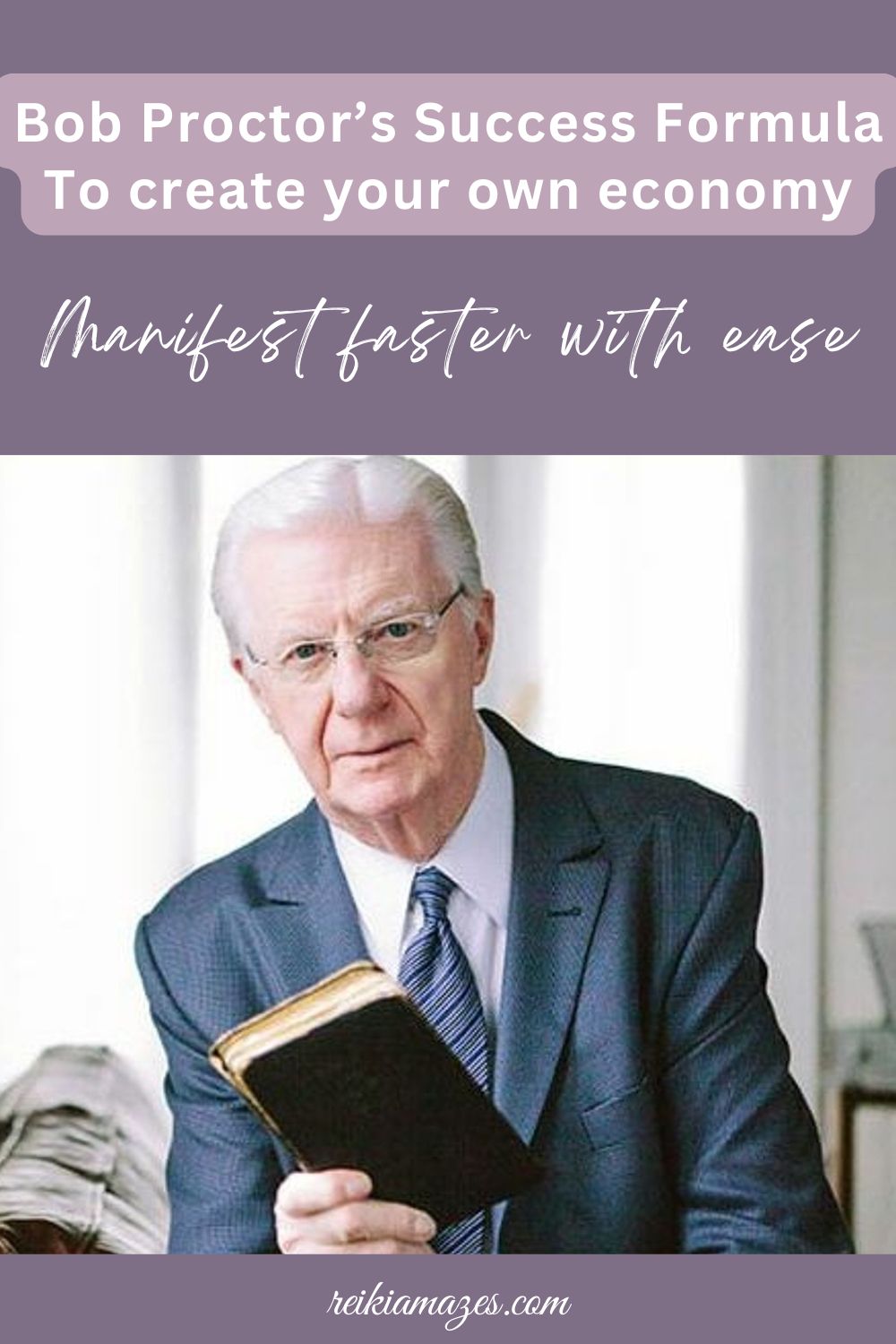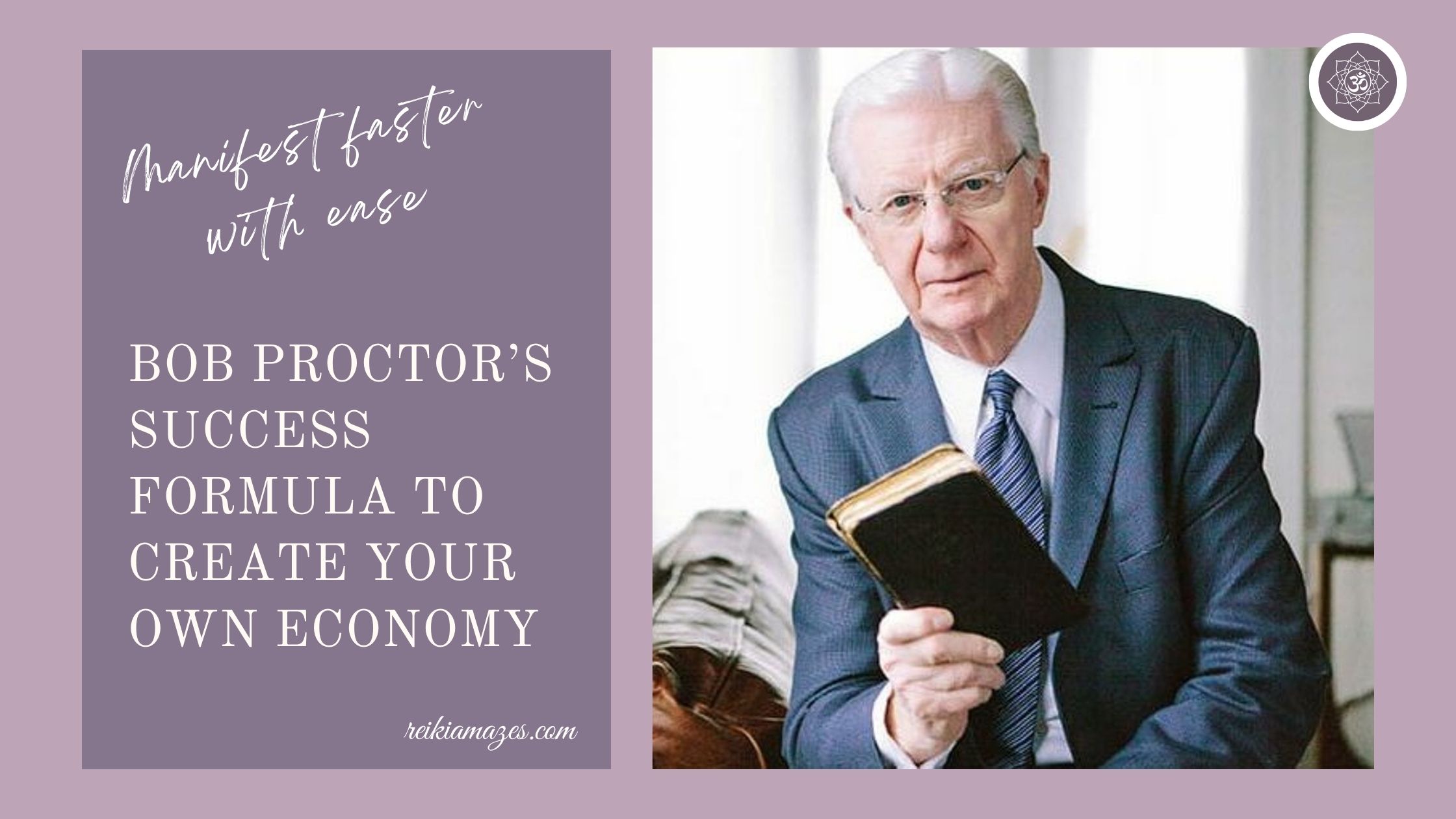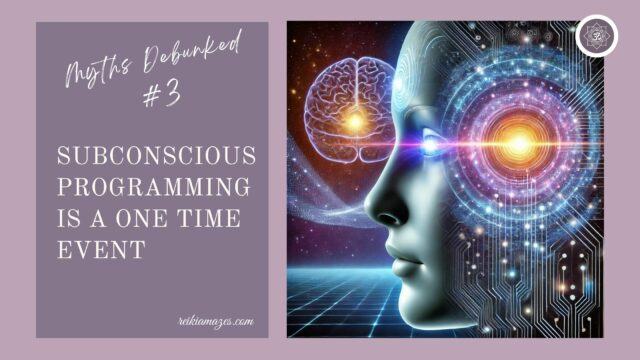Have you ever felt that spark of inspiration after watching a motivational video, only to find yourself back in the same old routine a few days later? Or perhaps you’ve wondered why some people seem to effortlessly attract success while others struggle despite working twice as hard? Welcome to the fascinating world of Bob Proctor’s success formula—where that gap between knowing and doing is finally bridged with practical wisdom!
Bob Proctor, the legendary personal development pioneer who passed away in February 2022 at the age of 87, left behind a treasure trove of transformational teachings that continue to change lives around the world.
From his appearance in the groundbreaking documentary “The Secret” to his decades of seminars, books, and programs, Bob dedicated his life to one mission: helping people understand the incredible power of their own minds.
What makes Bob’s teachings so powerful isn’t just their depth but their remarkable practicality. This isn’t about wishful thinking or temporary motivation—it’s about fundamentally rewiring how you think, feel, and act to create lasting transformation in every area of your life.
In this guide, we’ll explore the core principles of Bob Proctor’s teachings and break them down into actionable steps you can begin implementing today. Get ready to shift paradigms, expand consciousness, and finally unleash the extraordinary potential that’s been within you all along!
What are Bob Proctor’s Teachings?
Bob Proctor’s teachings represent a cohesive philosophy of human potential that draws from many wells of wisdom—from Napoleon Hill’s “Think and Grow Rich” (which Bob reportedly read thousands of times) to quantum physics, ancient spiritual traditions, and Bob’s own remarkable life experiences.
At their core, these teachings revolve around understanding the relationship between your conscious mind, subconscious mind, and the universal mind (or what some might call the quantum field or infinite intelligence).
Bob taught that most people operate almost entirely from their programming—the beliefs, habits, and thought patterns installed in their subconscious mind through past experiences and repetition—rather than consciously directing their mental faculties toward their desires.
The key principles include:
- the power of vibration and frequency (that we attract circumstances that match our dominant thoughts and feelings),
- the importance of paradigm shifts (changing deep subconscious beliefs),
- the law of polarity (understanding that success and failure are two sides of the same coin), and perhaps most importantly,
- the practice of living “in the gap”—maintaining unwavering faith in your vision even when external circumstances haven’t yet caught up.
What separated Bob from many teachers was his extraordinary ability to make complex concepts simple and actionable.
He would often say, “I’m not telling you something new—I’m causing you to think about what you already know in a different way.” This approach helped countless people experience breakthrough moments of clarity that transformed their understanding of themselves and their potential.
Why Do Bob Proctor’s Teachings Matter?
In a world where anxiety, burnout, and a sense of unfulfillment have reached epidemic proportions, Bob Proctor’s teachings offer a refreshingly different approach to life. Rather than focusing on external achievements or temporary fixes, they address the root cause of all results: our thinking.
Research increasingly supports many of Bob’s long-taught principles. Studies in neuroplasticity confirm that our brains can indeed be rewired at any age.
Research in epigenetics shows that our beliefs and perceptions can influence which genes are expressed in our bodies. And quantum physics continues to reveal the observer effect—that consciousness itself influences physical reality in ways we’re only beginning to understand.
What makes these teachings particularly valuable is their holistic nature. Unlike programs that might help you earn more money but leave you stressed and disconnected, Bob’s approach aims for harmony across all life dimensions—health, relationships, creative expression, spiritual growth, and yes, material abundance too.
He understood that true success isn’t about sacrificing one area of life for another but elevating your entire being to a higher level of awareness and capability.
Perhaps most importantly, these teachings empower people to take full responsibility for their lives rather than remaining victims of circumstance.
As Bob would say, “You’re either living by design or by default.” His methods help people consciously design their lives instead of merely reacting to whatever comes their way—a skill that’s more valuable than ever in our rapidly changing world.
How to Apply Bob Proctor’s Teachings in Your Life
Let’s transform Bob’s profound wisdom into practical steps you can implement starting today. These aren’t quick fixes but rather powerful practices that, when applied consistently, create tremendous momentum toward your goals and dreams.
Step 1: Understand Your Current Paradigms
Bob frequently said that paradigms—the collection of beliefs, habits, and thought patterns in your subconscious mind—are the single biggest barrier between you and the life you desire. Before you can change them, you need to become aware of what they are.
Start by examining areas of your life where you feel stuck or where results keep repeating despite your conscious efforts to change them.
These patterns often reveal underlying paradigms at work. For example, if you consistently earn around the same amount of money regardless of your job or business, there’s likely a deeply held belief about your worth or what’s possible for you financially.
Pay attention to the thoughts that automatically arise when you think about your goals. Do you hear inner objections like “That’s not realistic” or “People like me don’t do things like that”? These are clues to your paradigms.
Also notice your habitual language—phrases like “I can’t afford that” or “I always mess this up” reveal programs running in your subconscious.
Bob taught a powerful technique called “self-analysis” where you spend time in quiet reflection asking yourself questions like: “Why do I think this way?” “Where did I learn this belief?” “Is this actually true, or merely an opinion I’ve accepted?” Write your answers in a journal without censoring yourself, and patterns will begin to emerge.
Fun exercise: Try the “mirror technique” that Bob often recommended. Stand in front of a mirror, look yourself in the eyes, and state your goals and dreams aloud. Notice any discomfort, skepticism, or resistance that arises. These reactions often point directly to limiting paradigms that need shifting!
Step 2: Develop Unwavering Awareness of Your Potential
“You are a spiritual being endowed with creative faculties having immense potential.” This foundational belief in Bob’s teachings requires more than intellectual understanding—it demands a daily practice of aligning with your higher nature.
Begin by studying success principles daily. Bob was adamant about the importance of daily study, often recommending reading books like “Think and Grow Rich” or his own “You Were Born Rich” for at least 15 minutes every morning. This consistent input helps counteract the negative programming we all receive from various media and environments.
Create a personal statement of potential that inspires you. Bob encouraged writing a clear, emotionally charged statement of who you truly are beyond your current circumstances.
Start with “I am…” and describe your ideal self in present tense, as if it’s already true. For example: “I am a powerful creator, fully aligned with universal intelligence, expressing my unique gifts with joy and abundance.”
Practice the “as if” principle by walking, talking, and carrying yourself as if you’ve already achieved your goals. This isn’t about pretending but about aligning your physical state with your desired reality, which Bob taught creates a powerful resonance that attracts corresponding circumstances.
Common mistake alert: Many people try to affirm their potential while still marinating in negative emotions like worry or doubt. Bob emphasized that your emotional state is crucial—affirmations without corresponding feelings have limited power. Always combine statements of truth with genuine emotional enthusiasm!
Step 3: Set Clear Goals with Emotional Intensity
“Vague goals produce vague results.” Bob was relentless about the importance of clarity and precision in goal-setting, combined with deep emotional commitment.
Start by writing your goals in specific, measurable terms with deadlines. Instead of “I want more money,” write “I am earning $10,000 monthly by December 31st through my creative consulting business.” Be precise about what you want, when you want it, and how it will come about.
Once you’ve written your goal, Bob taught a critical next step that most people miss: emotionally charging it.
Close your eyes and imagine already having achieved this goal. What does it feel like? Who’s with you celebrating? How has your life changed? The more vividly you can experience these emotions in advance, the more powerful your goal-setting becomes.
Create a goal card carrying your primary goal that you read multiple times daily. Bob would have his goals laminated on small cards he carried everywhere, reviewing them during any idle moment. This practice keeps your conscious mind focused and helps penetrate the subconscious where real change happens.
The 30-day challenge: Bob often recommended choosing one important goal and committing to focused action toward it for 30 consecutive days. This builds momentum and helps break through the initial resistance that stops most people. Record your progress each evening and begin each morning by reviewing your written goal and feeling the emotions of its achievement.
Step 4: Harness the Power of Autosuggestion and Visualization
Bob Proctor was a master at explaining how to effectively communicate with your subconscious mind, which doesn’t understand negation and responds most powerfully to repetition, emotion, and imagery.
Develop a powerful daily affirmation practice that aligns with your goals. Rather than generic statements, create personalized affirmations that address your specific paradigms.
If you’ve identified a belief that “money is scarce and hard to earn,” your affirmation might be: “Money flows to me easily and abundantly through multiple channels. I am a money magnet!”
Practice visualization twice daily—upon waking and before sleep—when your subconscious mind is most receptive. Bob taught that these “alpha moments” are golden opportunities to impress new images on your subconscious. Spend 10-15 minutes vividly imagining yourself living your goal as if it’s happening now, engaging all your senses in the experience.
Create a vision board or “treasure map” as Bob sometimes called it. Gather images, words, and symbols representing your goals and arrange them on a board you’ll see daily. The key difference in Bob’s approach: don’t just look at these images passively—interact with them emotionally, imagining yourself stepping into these pictures as your present reality.
Bob’s cinema technique: Imagine sitting in a movie theater watching yourself on screen living your ideal life. Then step into the movie and experience it from the first-person perspective. Finally, step back out and watch it again as an observer. This mental rehearsal was one of Bob’s most powerful recommendations for subconscious reprogramming.
Step 5: Take Persistent Action Through Fear
“Action is the bridge between the inner world and the outer world.” Bob emphasized that all the mental work must be translated into consistent, courageous action to manifest results.
Start by identifying your “high-leverage activities”—the specific actions that will move you most directly toward your goals. Not all actions are created equal. Focus on the 20% of activities that will generate 80% of your results, what Bob called “high-value tasks.”
Practice the “do it now” philosophy that Bob learned from his mentor Earl Nightingale. When you think of something that should be done, take immediate action rather than postponing it. This builds the habit of decisiveness and momentum that characterizes high achievers.
Use the “terror barrier” concept to push through fear. Bob taught that whenever we attempt to break out of our current paradigm, we encounter fear—what he called the terror barrier. The key is recognizing this fear as a positive sign of growth rather than a warning to retreat. When fear arises, say to yourself, “This discomfort means I’m growing!” and move forward anyway.
Implement Bob’s “accountability log” by recording your daily actions toward your goal. Each evening, write down what you accomplished, what you learned, and what you’ll do differently tomorrow. This creates a feedback loop that accelerates your progress and builds self-trust through consistent follow-through.
Additional Enhancements
The Power of Mastermind Groups
Bob was a strong proponent of Napoleon Hill’s mastermind principle—the exponential power created when two or more minds work in perfect harmony toward a definite purpose. Form or join a mastermind group of like-minded individuals committed to growth who meet regularly to share goals, challenges, and support.
Bob’s Gratitude Practice
Bob recommended ending each day by writing five things you’re grateful for, including at least one thing that hasn’t happened yet but you’re expecting. This trains your mind to be both appreciative of current blessings and expectant of future good, a powerful combination for attracting more positive circumstances.
The Six Minutes That Can Change Your Life
Bob often taught this simple daily practice: Spend three minutes each morning and three minutes each evening in complete silence, focusing solely on your breathing and becoming fully present. This quiets the conscious mind and allows deeper connection with your infinite potential before engaging with external stimuli.
Recommended Resources
- Books: “You Were Born Rich” and “The ABCs of Success” by Bob Proctor
- Programs: “The Science of Getting Rich” seminar (available online)
- Practices: The “Thinking Into Results” process that Bob developed with his business partner Sandy Gallagher
Common Mistakes to Avoid
- Inconsistent application: Bob emphasized that these principles work with mathematical precision when applied consistently. Sporadic effort produces sporadic results.
- Working only on the conscious level: Many people try to change their lives through willpower alone without addressing subconscious programming. True transformation requires working at both levels.
- Focusing on the “how” too soon: Bob taught that excessive concern with how your goal will manifest often limits the creative process. Focus first on the what and why; the how will reveal itself as you move forward.
- Looking for quick results: Paradigm shifts take time and repetition. Bob often cited 90 days of consistent practice as the minimum time needed to begin seeing significant changes in deeply held patterns.
- Sharing goals with negative people: Be selective about who you share your dreams with. Bob recommended protecting your goals from those who might project their own limitations onto your vision.
Troubleshooting and Answering Common Questions
Q: I’ve been applying these principles but don’t see results yet. What am I doing wrong?
A: Bob would say this isn’t about doing something wrong but about persisting through what he called “the lag time.” There’s always a period between planting a seed and seeing the sprout.
Continue your practices with faith while looking for small signs of progress you might be overlooking. Also check if you’re truly feeling the emotions of your desired outcome or just going through mechanical motions.
Q: How do I know which limiting paradigms are holding me back?
A: Look at your results—they never lie. Areas where you consistently struggle despite effort reveal paradigm issues. Also pay attention to what triggers strong emotional reactions in you—these often point to deeply held beliefs. Sometimes working with a coach trained in Bob’s methods can help identify blind spots you may miss on your own.
Q: Can these principles work for anyone, regardless of background or circumstances?
A: Bob was emphatic that these laws work for everyone, regardless of age, education, or background. He himself had dropped out of high school and was in deep debt before discovering these principles. However, he acknowledged that different people may have different starting paradigms to overcome, which can affect how quickly results appear.
Recommended Read:
The Power of Your Subconscious Mind: What Science Says
5 Ways to Reprogram Your Subconscious Mind | Scientifically Proven Techniques
Can Thoughts Change Reality? The Science Behind Manifestation
How to Make Daily Affirmations Work | Wisdom from Louise Hay
Use the Subconscious for Weight Loss | Watch the Pounds Melt Away
7 Signs Your Subconscious Is Blocking You
6 Secrets to Wealth by Joseph Murphy
Can Sleep Really Solve Your Problems? Science Says Yes!
Rewiring the Subconscious for Success: 5 Inspiring Case Studies
How Subconscious Beliefs are Formed (and How to Change Them)
Emotions and Your Subconscious Mind: Decoding the Connection
Placebo Effect and Subconscious Mind: The Shocking Truth
Subconscious Mind and Visualization | Proven Technique That Works Like Magic
Conclusion and Your Action Plan
Bob Proctor’s teachings represent a magnificent synthesis of ancient wisdom and modern understanding about human potential.
The essence of his message was that you already possess everything you need to create an extraordinary life—you simply need to align your thinking, feeling, and actions with the infinite possibilities available to you.
As you implement these principles, remember Bob’s frequent reminder that this is not about adding something new to your life but about removing the limitations that have prevented your natural greatness from expressing itself.
The process is one of revealing rather than building—uncovering the magnificent potential that has been within you from the beginning.
Start today with these simple steps:
- Choose one area of your life for focused improvement
- Identify the limiting paradigms operating in that area
- Create clear, specific goals with emotional intensity
- Establish a daily practice of affirmation and visualization
- Take immediate, persistent action despite fear
Above all, maintain what Bob called “an attitude of gratitude” throughout your journey. Gratitude connects you with the abundant flow of life and keeps your vibration high, attracting more circumstances to be grateful for.
? Destiny Designers, Now that you’ve been introduced to Bob Proctor’s transformational teachings, which principle resonates most deeply with you? Is it the power of paradigm shifts, the importance of emotionally charged goals, or perhaps the courage to push through the terror barrier?
Drop a comment below and let’s grow together! And if you know someone who’s ready to break through to their next level, share this post with them. After all, as Bob would say, “When you realize the greatness within you, you can’t help but share it with others!”
Don’t forget to save this post for later and share it with your transformation buddies! We’re all in this journey together, designing our destiny one paradigm shift at a time. ?














